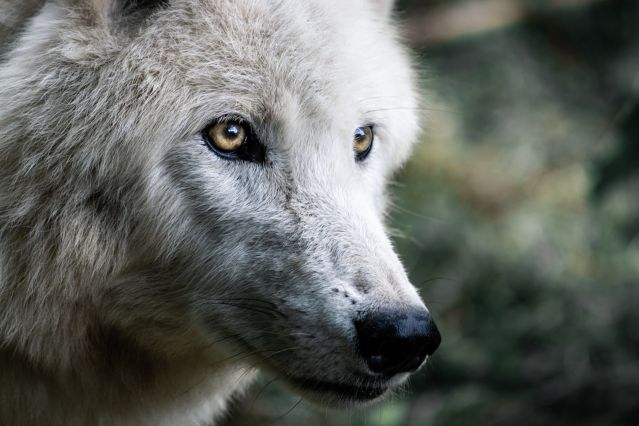Environment
Rethinking Wolf Pack Stability
New research confirms wolf hunting hurts more than just the supposed top wolf.
Posted April 28, 2023 Reviewed by Tyler Woods
Key points
- The view of wolf packs as ruled by an indispensable pair of "alphas," male and female, has been recently challenged.
- Instead of dominating the pack, the "alpha" male and female are now shown to be merely the breeding pair.
- Non-mating wolves who hunt are crucial to teaching new generations how to be wolves.
- Losing those non-mating wolves can be detrimental to the pack as a whole.
Among the attributes that made Pleistocene wolves and our early human ancestors so sympatico was their devotion to family—their pack. At its base, the pack consists of the breeding pair, Ma and Pa; their pups of the year; and older juveniles and pack members who are helping raise the pups.
.jpg?itok=Ujsq8kgH)
The pups learn from the pack members how to be a wolf and more precisely how to be a wolf in that pack. It is easy to imagine how removing even one member from any given pack can alter, if not permanently disrupt, its culture. Now, a group of wolf researchers led by Kira A. Cassidy of the Yellowstone Center for Resources at the National Park of the same name, has shown, using data on human-caused mortalities collected from the field over the course of as long as 33 years, that any death within a pack can have far-reaching effects on the pack as a whole.
The data came from national parks and preserves with wolf populations, including Denali National Park and Preserve, Grand Teton National Park, Voyageurs National Park, Yellowstone National Park, and Yukon-Charley Rivers National Preserve. The paper, published in Frontiers in Ecology and the Environment, shows that the effect is especially acute when one or both of the breeding pair is killed.
These findings should come as no surprise: It’s long been clear that wolves and other pack-forming social animals pass a large amount of information to their offspring. What is somewhat more surprising is that the loss of a non-breeder, a wolf who hunts for the group and helps provide for the younger generations—generally, although not always, a cousin or half-sibling—represents the loss of essential knowledge that is hard to replace, especially when it comes to the crucial activity of hunting.
To me, this provides a definitive refutation of the notion that wolf packs operate under the strict rule of an alpha male and alpha female who dictate all pack behavior. As I have written elsewhere, that thinking represents a narrow, rigid view, more in keeping with hierarchical human power structures, like those found in the military or corporations. (See my more lengthy argument in Dog’s Best Friend, p. 37).

It is worth noting here that Scientific American ran an article by Stephanie Pappas in its February 28, 2023 issue that debunks the notion of the alpha wolf as the strongest member of the pack, a contention that was made over 20 years ago by L. David Mech after observing wolves on Canada’s Ellesmere Island for 13 years. Publishing in 1999, in the Canadian Journal of Zoology, Mech was the first to document that the so-called alpha pair in a wolf pack were merely the breeding pair.
Cassidy and her colleagues observe that among the 193 packs, there were “978 wolf mortalities from 1986 to 2021. On average, 5.3 percent of each pack died from a human-related cause each year.” The effects of human-caused mortality were more keenly felt in small packs than in larger ones, which usually form when game is abundant.
Clearly, the result of human-caused destabilization of the pack and the loss of essential knowledge, like that relating to hunting, affects the surviving members’ ability to take care of themselves, either defensively or in hunting their preferred prey. For some packs, the result might be dissolution, as its members float or drift off, looking for a new pack to join (if they are permitted to do so). Other packs could vanish altogether.
The researchers also spend time discussing how their findings could potentially be used by wildlife managers to develop policies that strengthen protections for wolves that venture outside the protective boundaries of national parks, for example, by establishing corridors that allow them to move from park to park. This study should lay to rest a number of myths concerning the hunting of wolves, but for now, the trend seems to be toward more, not less, senseless slaughter.
References
Full disclosure: A group called Living With Wolves, founded by Jim and Jamie Dutcher, contributed data and financial support to this study. I have served on the Science and Recovery Advisory Committee of that foundation. I had no involvement in this research. My thanks to Daniel Elliott for assisting with the research on this article.
Cassidy, Kira A., et al. "Human-caused mortality triggers pack instability in gray wolves." Frontiers in Ecology and the Environment, January 17, 2023. https://doi.org/10.1002/fee.2597.
Mech, David L. "Alpha status, dominance, and division of labor in wolf packs." Canadian Journal of Zoology, November 1999. https://doi.org/10.1139/z99-099.
Pappas, Stephanie. "Is the Alpha Wolf Idea a Myth?" Scientific American, February 28, 2023. https://www.scientificamerican.com/article/is-the-alpha-wolf-idea-a-myth/?utm_source=Nature+Briefing&utm_campaign=22d7dd2757-briefing-dy-20230301&utm_medium=email&utm_term=0_c9dfd39373-22d7dd2757-42422315.


